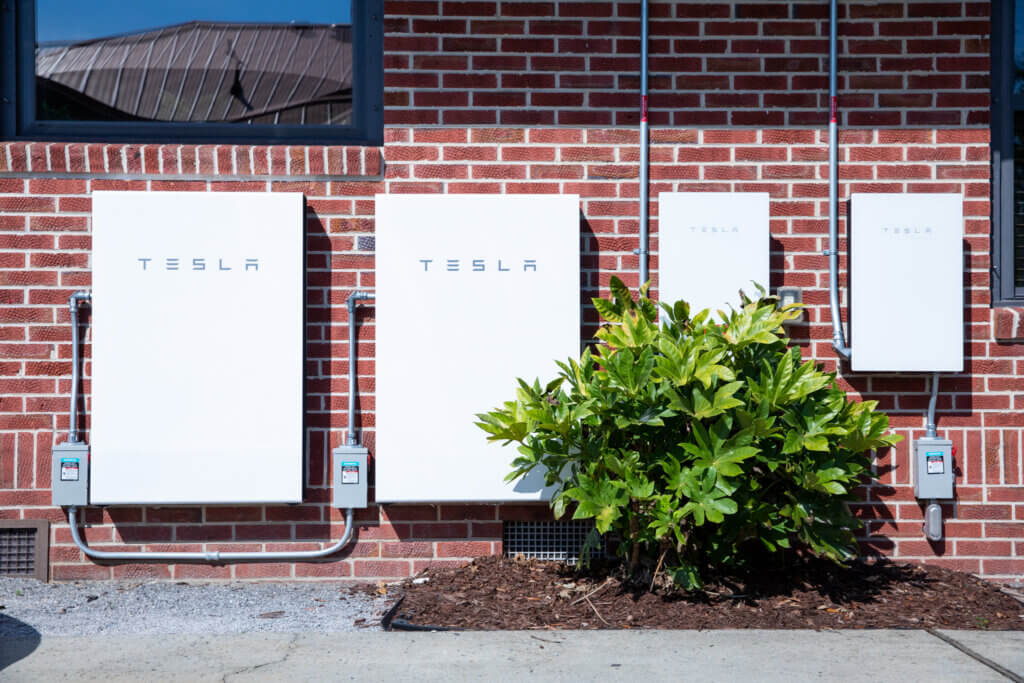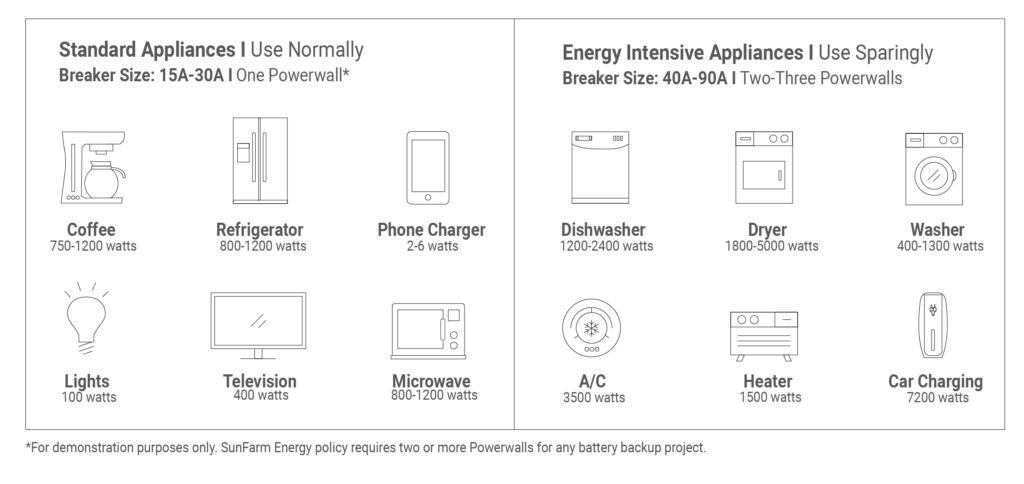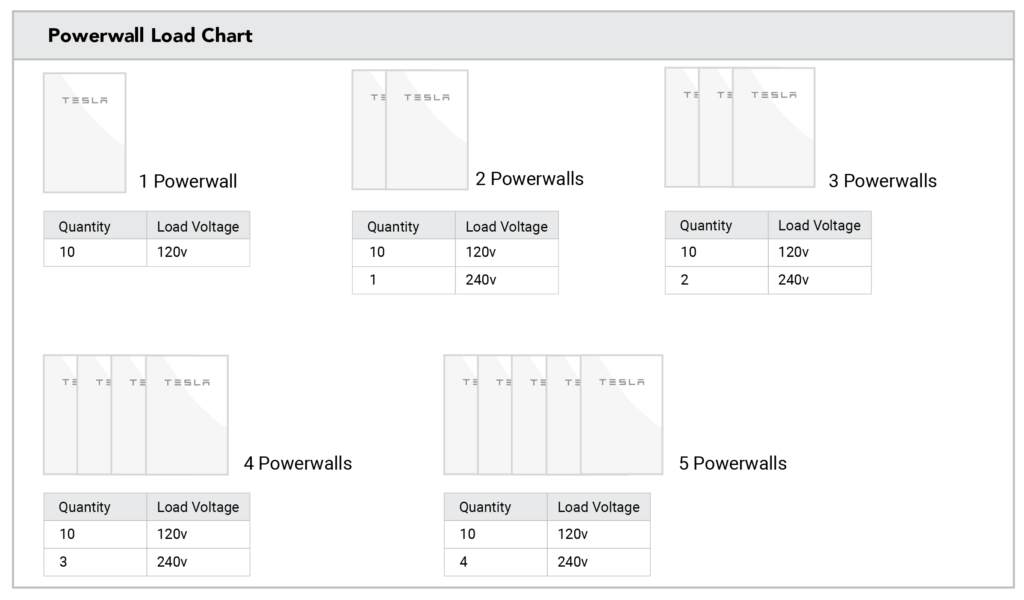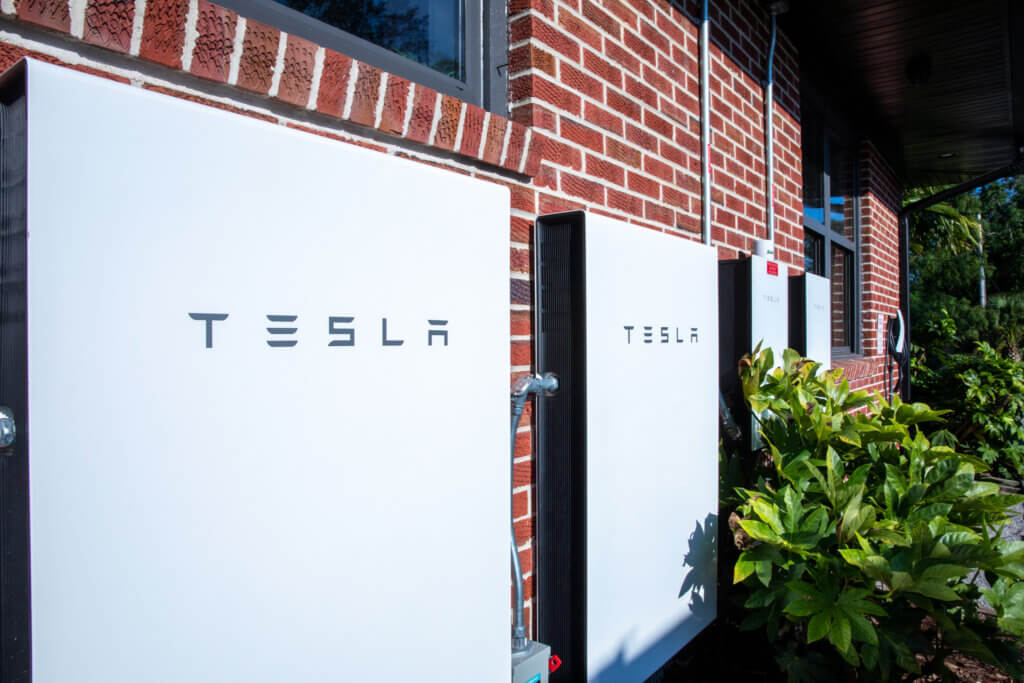Solar + Storage Basics
How does solar + storage work?
Solar photovoltaic (PV) systems typically generate more energy than a home can use in a day. Systems without battery storage with Tesla Powerwall send excess energy back to the grid and the customer receives a credit on their bill from the power company. This is known as net metering.
With a battery storage option like Tesla Powerwall, excess energy that would normally be returned to the grid is stored for future use during evening hours or in the event of an outage. Keep in mind that solar arrays that aren’t paired with a battery solution cannot operate when the grid is down. This measure is meant to protect utility workers who are repairing transmission lines. However, with a battery storage solution, you can keep your home essentials running during an outage.
Why is battery storage a good option?
Adding battery storage can help you take the next step towards optimizing your use of solar energy. Battery storage provides even greater energy independence by reducing your reliance on the grid. It also provides peace of mind in the event of an outage. With battery storage, you can rest easy knowing your essentials are covered. It’s also a great option to maximize your solar use when the sun isn’t shining. Storing energy isn’t just for outages, you can use that excess energy during evening hours when your solar array is dormant for the night.
Battery storage can also help further reduce your reliance on fossil fuels. The more energy you’re generating on your rooftop and storing for later use, the less you’re relying on a grid that functions primarily on fossil fuels. Plus, battery storage can replace a traditional gas-burning generator for emergency power.

About the System
What is Tesla Powerwall?
Tesla Powerwall is a hybrid solar battery that can be used to keep your home functioning during a power outage. It’s helpful to think of Tesla Powerwall as a traditional generator, but without the noise and need for traditional fuel. During daylight hours, your solar array will charge your Tesla Powerwall system, allowing you to keep your home running for multiple days.
How many batteries do I need for my property?
Finding the right battery storage system size depends on multiple factors. It’s important to consider what home appliances or electronics you might deem essential in an outage. This could be your refrigerator, a few lights, your TV, or a sump or well pump.
The key word here is essential. Many home appliances use a lot of energy so it’s important consider only what would keep you most comfortable during an outage. For some folks, air conditioning may be essential, but keep in mind that this will increase the number of Powerwalls you may need to cover such a large load.
Today, most systems require at least two Powerwalls. Your Energy Consultant will work closely with you to determine which size system is right for you. Check out the chart below for some estimates on home appliance electricity consumption and the corresponding number of Powerwalls that are needed.


How long can Powerwall provide power to my home during an outage?
The duration of power availability with battery storage depends on a few key factors: what are you powering, how much energy does it use, and how long do you need it to run?
In a perfect world, your Tesla Powerwall could power your home for an unlimited amount of time if you monitor your power consumption. This means only using essential loads and using them sparingly. Keep in mind that your solar PV system will charge your Powerwall during the day, but not at night. Monitoring consumption throughout a prolonged outage period is essential for success with a battery storage system.
Will Tesla Powerwall work with my existing solar array?
In most cases Tesla Powerwall will function with an existing solar array. However, there are some factors to consider including system size, inverter type, and system age. Your Energy Consultant will work with you to determine if your existing system can be utilized with Tesla Powerwall.
Do I need solar panels to use Tesla Powerwall?
Tesla Powerwall can be used without a solar PV system. In the absence of solar, Powerwall is charged by the grid. However, without an additional “fuel” source, your Powerwall will not function during a grid outage because it cannot be recharged. In addition, using Tesla Powerwall with solar provides greater tax benefits, more electricity bill savings, and less reliance on the grid.
Can Tesla Powerwall be used for off-grid applications?
Tesla Powerwall is meant to provide backup power for your home during an outage. The system is not designed for true off-grid applications such as remote cabins or RVs/vans where there is no electrical grid available. However, if your solar PV system was designed for 100% offset – able to provide 100% of your energy needs – then an off-grid application may not be necessary. With solar alone, it’s possible to achieve “net zero.”
What is the warranty on Tesla Powerwall?
The Tesla Powerwall warranty period is 10 years. During this time frame, Tesla ensures that your system will maintain at least 70% of its original storage capacity. If you use Tesla Powerwall for self-consumption or as storage for your solar array, there is no limit on the number of battery cycles allowed during the warranty period.

Pricing & Installation
How do I get a quote for Tesla Powerwall?
We would be happy to provide you with a quote for Tesla Powerwall. You can fill out our contact form, give us a call, or send us an email. Our Energy Consultants will work with you every step of the way to ensure your battery system is customized for your lifestyle and energy goals.
How much does Tesla Powerwall cost to install?
Tesla provides a discount for each additional Powerwall that is installed. Tesla requires systems to utilize a minimum of two batteries and pricing for two Powerwalls is around $25-$30k. With installation included, a two-Powerwall system may be between $30-$35k depending on the complexity of the project. Be sure to contact your Energy Consultant or request a quote to receive the most up to date pricing.
Why is SunFarm Energy’s quote higher than Tesla’s estimate?
When you request a quote through the Tesla website, your estimate will only include the cost of the battery alone. It does not include local labor costs, permitting fees, crew travel times, or additional electrical work. These factors can vary by location. Be sure to contact your Energy Consultant or request a quote to receive the most up to date pricing.
Can I purchase a Tesla Powerwall and install it myself?
No. Tesla does not allow installation to be completed by anyone other than a Tesla Certified Installer. Battery storage is still a relatively new technology which means it requires significant training and specialized skills by a licensed technician. SunFarm Energy is Tesla Certified Installer.
How long does Tesla Powerwall take to install?
The solar battery market is starting to take off as new federal incentives are announced. Demand is high, and the solar/storage industry is still grappling with supply chain interruptions caused by the pandemic. Be sure to contact your Energy Consultant, or request a quote, for the most up to date information on equipment availability and installation time frame.
Does Tesla Powerwall qualify for the Federal Tax Credit?
Yes. Thanks to the recent passage of the Inflation Reduction Act, a stand-alone battery installation does qualify for the 30% federal tax credit. In addition, those with an existing solar array can also claim the tax credit on a battery upgrade even if they have already claimed the credit for their solar array. However, we always recommend speaking with a tax professional before moving forward with a solar or solar + storage project.